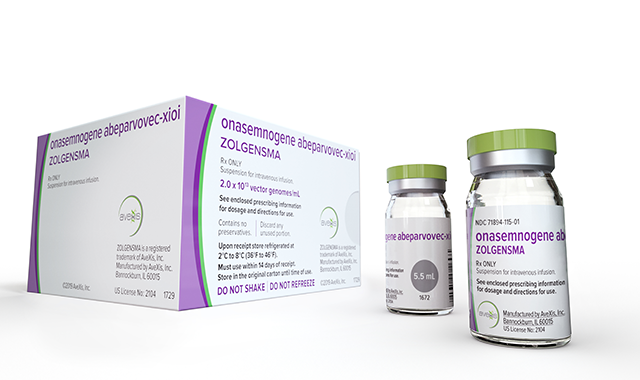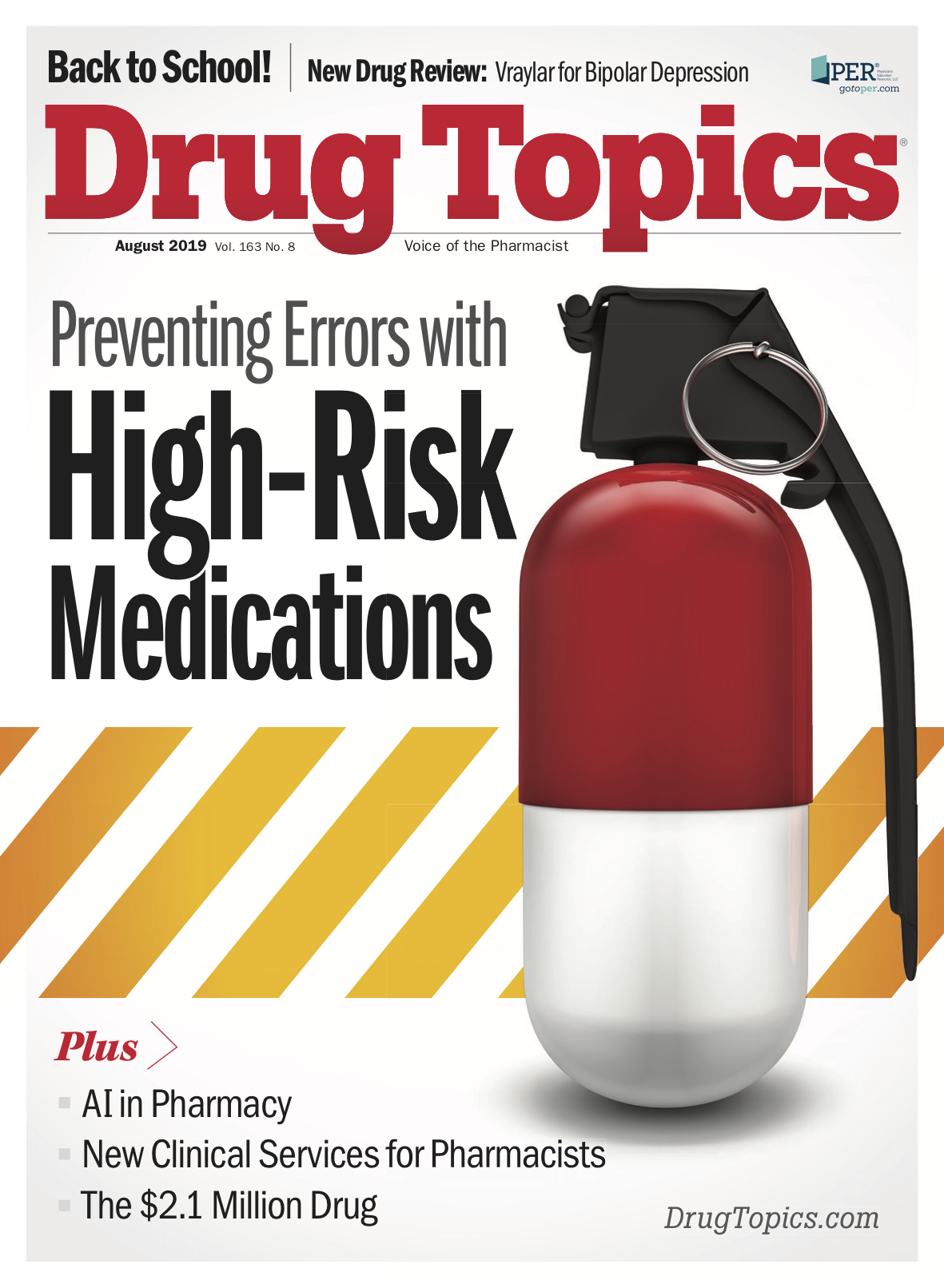Zolgensma: The $2.1 Million Drug
A cure and a bargain?

Dave Lennon, PhD

B. Douglas Hoey, RPh

Dorothy Keville, MEd

The science of modifying human DNA to correct defective genes has come a long way since the first studies in the late 1970s. More often these attempts were considered failures than successes.
However, the approval of viral vector-delivered Zolgensma (onasemnogene abeparvovec-xioi), for infants with spinal muscular atrophy (SMA), changed everything. It not only targets the defective motor neuron cells, but alters them permanently so they function properly. It is not a treatment, it is a cure, and a new benchmark in gene therapy.
In May, Zolgensma, developed by Illinois-based AveXis, a Novartis company, was approved by the FDA for SMA. With a single one-time infusion therapy costing more than $2 million, it was labeled the most expensive treatment in the world.
Researcher and AveXis president, Dave Lennon, PhD offers some background that lead to the discovery of this unprecedented, life-saving therapy.
“We were studying gene therapy for decades under the assumption that, with the Human Genome Project, gene therapy would be right around the corner. But the reality was it took decades to figure out how to deliver the therapy safely and effectively, and get FDA approval.”
Trending: The Redefinition of Pharmacy Jobs
SMA is a disease that affects 1 in 6,000 to 10,000 live births. The most severe form, SMA 1, causes death usually before age 2, but some people with other forms of SMA live to adulthood and, in one form, do not show symptoms until after early childhood. It is caused by a genetic defect in the SMN1 gene that codes for the protein necessary for survival of motor neurons. In its most severe form, SMA Type 1, there is rapid motor neuron loss, muscle degeneration, and a need for permanent ventilation support in the child. Zolgensma is basically the functional gene needed to replace the defective one, Lennon says.
“Delivery is a one-time intravenous infusion, given over an hour. It’s pretty straightforward and uneventful. But you have to get this to patients as soon as they are diagnosed, as loss of motor neurons is permanent.”
Sticker Shock
The life-saving effects of Zolgensma are there, but its price of $2.125 million has added to the media attention and debate about drug pricing for this new gene therapy.
B. Douglas Hoey, RPh, MBA, CEO of NCPA, sees Zolgensma as a call to action for pharmacists.
“First of all, this drug deserves a big hoorah; thank goodness it exists, and thanks to the scientists that led us to figuring out this technology and process to cure this terrible disease. That is the top line,” he says.
“Second, is how we pay for it. When gene therapy becomes mainstream, which I believe it will, then those costs will be absorbed by a wider population. Then there will be less individual expense associated with a respective disease as costs are spread out and borne by employers and insurance companies.”
Read More: 10 Fast Facts About Shingles
Hooey adds that the payer world will need to catch up with these breakthrough therapies.
“They’re used to reimbursement models of chronic, ongoing care, often for the life of the patient. Now, we are looking at a very near future where a high-cost one-time treatment like this drug potentially eliminates or vastly reduces those lifetime costs.”
An Old Price Shock Revisited
The dialogue about Zolgensma’s price harkens back to an earlier, similar scenario.
Dorothy Keville, MEd, recalls when AZT was launched in 1987. Keville, co-founder of the 1995 AIDS Drug Assistance Program (ADAP) Working Group, explains: “This was the first and only treatment for HIV/AIDS at the-then outrageously steep price tag of $15,000. At that time, no one had ever challenged the market, and it took unheard of collaboration with the manufacturer, AIDS activists, and policy makers to create the ADAP program for patient access and drug reimbursement,” she says.
“But we did it, and it wasn’t long before newer and better drugs were approved and a new payer system, ADAP, was in place. Today, reimbursement programs are commonplace, but we were the first to lay that groundwork.”
Alan Wright, MD, MPH, agrees. “The entry of a million-dollar therapy can act as a stressor to the system and will spark a variety of innovations. Wright is the former chief medical officer of Advance PCS/Caremark,
“The stakes are much higher as the investment of time and money to achieve these discoveries is high risk, but the innovations won’t stay isolated to million-dollar drugs, and as more discoveries enter the market prices will be lowered.”
Cure versus Chronic Care
In rare diseases like SMA, Wright points out that a one-time high-cost treatment such as Zolgensma, in effect, eliminates the millions of dollars that would otherwise be spent on chronic therapy. “Which in the case of this disease, could be in excess of $4 million in just the first decade of the child’s life.”
AveXis is partnering with both government and commercial payers to accelerate decisions on how Zolgensma will be covered, Lennon adds.
Trending: Testing Recommendations for Hepatitis C
“We have established outcomes-based agreements with payers because we believe in the long-term value of Zolgensma and are willing to stand behind the therapy.”
One of those partners is the Massachusetts-based Harvard Pilgrim Health Care. Michael Sherman, MD, MBA, and chief medical officer of the healh plan, says that Pilgrim’s outcomes-based agreement with AveXis “helps ensure that we balance access and affordability for our members.”
While there would be only a small number of newly-diagnosed patients with the rarer SMA Type 1 disease each year, Sherman adds, “We believe it is our responsibility to provide access to this lifesaving treatment.”
The real-time patient monitoring of a million-dollar drug is essential, says Wright. “Because it really matters that outcome goals are met; payers will be following this very closely.”
Addressing the high price of treatment, Lennon concurs, “In terms of cost, this is cost versus pricing. One question is, ‘what does it take to manufacture this product versus the pricing, which is driven by value?’ In this case, a very severe disease, patients will die if not treated, and the supportive care will be many millions to just stay alive. To produce this live-engineered virus is a huge production process to make enough to treat just one person, let alone hundreds or potentially thousands around the world.”
Read More: CVS Ramps Up Script Delivery
In partnership with specialty pharmacy Accredo, AveXis is also offering a pay-over-time option of up to five years to help ease short-term budget constraints especially for states, small payers, and self-insured employers. There have now been instances where families have turned to their local communities for financial help. One group in Florida raised $2.2 million for a little girl in a few days.
To help patient families navigate Zolgensma treatment, AveXis has implemented a patient support program called OneGene. This program provides each patient family with a personalized and dedicated support team in matters of reimbursement assistance; coordinates financial assistance for eligible patients; and helps patients, caregivers and healthcare professionals with any Zolgensma needs and questions.
In the meantime, NCPA’s Hoey says pharmacists must become much more familiar with pharmacogenomics.
“They need to learn more about these specialty drugs; they are not mainstream now, but I foresee the day, not too far in the future, when they will be.”
Because Zolgensma delivery will be handled by specialty pharmacy Accredo, “the likelihood of community pharmacists seeing this is very small, but it is a precedent, and I see this as a harbinger of things to come,” Hooey says.
